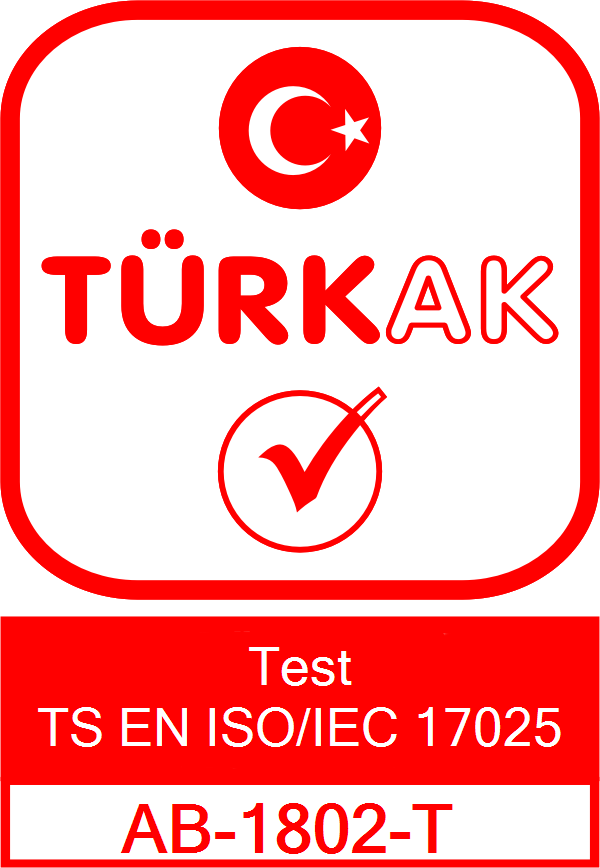Determination of Vapor Pressure
Determination of Vapor Pressure: Technical Analysis and Detailed Methods
Determination of vapor pressure is the measurement of the pressure exerted by vapor molecules formed on the surface of a liquid on the surrounding atmosphere. Vapor pressure provides critical information about the degree of volatility of a substance, its thermodynamic balance and its potential effects on the environment. This determination method is frequently used in the fields of chemistry, environmental sciences, the food industry and pharmaceuticals.
What is Vapor Pressure?
Vapor pressure is the dynamic equilibrium pressure created by the molecules in the vapor phase of a liquid as they return to the surface of the liquid. The higher the vapor pressure at a given temperature, the more volatile the substance is.
Vapor Pressure Determination Methods
Manometric Method
Principle: The pressure created by the evaporation of a liquid in a closed container is measured with the help of a manometer.
Area of Use: Pure liquids and mixtures.
Advantage: It is a simple and sensitive method.
Dynamic Vapor Pressure Method
Principle: The vapor pressure formed when the liquid is evaporated at a constant rate is measured.
Area of Use: Volatile organic compounds (VOC) and solvents.
Advantage: Provides high sensitivity and can operate over a wide temperature range.
Reid Vapor Pressure (RVP) Method
Principle: The vapor pressure of a liquid at a specific temperature is measured in a special Reid apparatus.
Area of Use: Petroleum products (gasoline, diesel).
Advantage: It is a standard method for petroleum products.
Thermogravimetric Vapor Pressure Measurement
Principle: Using a thermogravimetric analyzer, the mass loss of the liquid is measured and the vapor pressure is calculated.
Area of Use: Polymers and volatile organic compounds.
Advantage: It can be applied to solids as well as liquids.
Static Vapor Pressure Method
Principle: In a closed system, the pressure generated by the vaporization of the liquid is recorded with a sensitive pressure gauge.
Area of Use: Pure liquids and low volatility compounds.
Advantage: It offers high accuracy.
Temperature-Pressure Curve Method (Clausius-Clapeyron)
Principle: Vapor pressure is measured at different temperatures and enthalpy is calculated by drawing a temperature-pressure curve from these values.
Area of Use: Volatile and semi-volatile liquids.
Advantage: Allows analysis of thermodynamic properties.
Factors Affecting Vapor Pressure
Temperature:
Vapor pressure increases exponentially as temperature increases. Therefore, temperature control is important during measurement.
Molecular Structure:
Volatile compounds (e.g. weak Van der Waals forces in acetone) have higher vapor pressure than compounds with strong molecular interactions.
Composition of the Solution:
Adding a solvent (e.g. salt) to a liquid reduces the vapor pressure (Raoult's Law).
Vapor Pressure Determination Procedure
Device and Equipment Preparation
Calibration of the measuring device (manometer, RVP apparatus, etc.) is performed.
The liquid sample to be tested is prepared.
Placing the Sample
The liquid is placed in the measuring vessel and the device is closed.
The system must be airtight.
Temperature and Pressure Measurement
At a certain temperature, the pressure generated by the evaporation of the liquid is recorded.
The measurement can be repeated at multiple temperatures.
Calculation and Reporting
The vapor pressure value is evaluated against reference values.
The data is used to understand the volatility and thermodynamic properties of the substance.
Application Areas of Vapor Pressure Determination
Chemical and Petrochemical Industry:
Volatility analysis of solvents and fuels.
Quality control in petroleum products.
Pharmaceutical Product Development:
Determination of the evaporation properties of liquids used in drug formulations.
Environmental Analysis:
Investigation of the effects of volatile organic compounds (VOCs) on the atmosphere.
Air pollution assessment.
Food Industry:
Characterization of fruit juice, alcohol and volatile aroma compounds.
Polymer and Materials Science:
Evaluation of volatile components in polymers.
Advantages and Limitations
Advantages:
Provides critical information for volatility and purity analysis.
Can be applied to different substances with various methods.
High accuracy is achieved with modern instruments.
Limitations:
Expensive instruments may be required for high precision measurements.
Temperature and pressure changes can cause measurement errors.
The Importance of Vapor Pressure Determination
Vapor pressure determination is a critical method for understanding the physical and chemical properties of a substance. The degree of volatility provides important information regarding the environmental effects of the substance, its safe transportation and storage. Accurate measurement of vapor pressure in industrial processes is essential for optimizing production and quality control stages.

